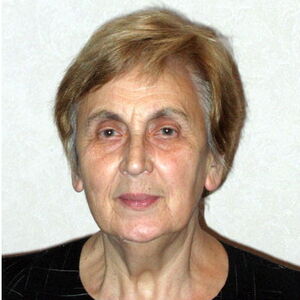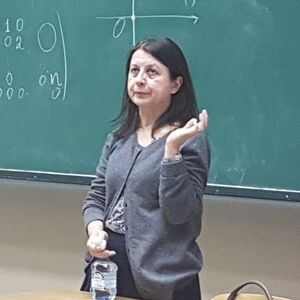42939 (687247), страница 3
Текст из файла (страница 3)
In a few noun lexemes of foreign origin both members of a number opposite are marked, e.g. symposium – symposia, genus – genera, phenomenon–phenomena, etc. But in the process of assimilation this peculiarity of foreign nouns gets gradually lost, and instead of medium – media a new opposite develops, medium – mediums; instead of formula – formulae, the usual form now is formula – formulas. In this process, as we see, the foreign grammatical morphemes are neglected as such. The ‘plural’ morpheme is dropped altogether. The 'singular' morpheme becomes part of the stem. Finally, the regular – s ending is added to form the 'plural' opposite. As a result the 'singular' becomes unmarked, as typical of English, and the 'plural' gets its usual mark, the suffix – s.
Since the 'singular' member of a number opposite is not marked, the form of the opposite is, as a rule, determined by the form of the 'plural' morpheme, which, in its turn, depends upon the stem of the lexeme.
In the overwhelming majority of cases the form of the 'plural' morpheme is /-s/, /-z/, or /-z/, in spelling – (e) s, e. g, books, boys, matches.
With the stem ox – the form of the 'plural' morpheme is – en /-n/.
In the opposite man–men the form of the 'plural' morpheme is the vowel change /æ > e/. In woman – women ii is /u > i/, in foot – feet it is /u – i:/, etc.
In child – children the form of the 'plural' morpheme is complicated. It consists of the vowel change /ai > i/ and the suffix – ren.
In sheep – sheep the 'plural' is not marked, thus coinciding in form with the 'singular'. They can be distinguished only by their combinability: ‘one sheep’, ‘five sheep’, ‘a sheep was…’, ‘sheep were…’, ‘this sheep’, ‘these sheep’. The 'plural' coincides in form with the 'singular' also in ‘deer, fish, carp, perch, trout, cod, salmon’, etc.18
All the 'plural' forms enumerated here are forms of the same morpheme. This can be proved, as we know, by the identity of the 'plural' meaning, and the complementary distribution of these forms, i.e. the fact that different forms are used with different stems.
As already mentioned 19, with regard to the category of number English nouns fall into two subclasses: countable and uncountable. The former have number opposites, the latter have not. Uncountable nouns are again subdivided into those having no plural opposites and those having no singular opposites.
Nouns like milk, geometry, self-possession having no plural opposites are usually called by a Latin name – singularia tantum. Nouns like outskirts, clothes, goods having no singular opposites are known as pluralia tantum.
As a matter of fact, those nouns which have no number opposites are outside the grammatical category of number. But on the analogy of the bulk of English nouns they acquire oblique (or lexicon-grammatical) meanings of number. Therefore singularia tantum are often treated as singulars and pluralia tantum as plurals.
This is justified both by their forms and by their combinability.
Cf. This (table, book, milk, love) is…
These (tables, books, clothes, goods) are…
When combinability and form contradict each other, combinability is decisive, which accounts for the fact that ‘police’ or ‘cattle’ are regarded as plurals, and ‘measles’, ‘mathematics as singulars.
The lexicon-grammatical meaning of a class (or of a subclass) of words is, as we know, an abstraction from the lexical meanings of the words of the class, and depends to a certain extent on those lexical meanings. Therefore singularia tantum usually include nouns of certain lexical meanings. They are mostly material, abstract and collective nouns, such as sugar, gold, butter, brilliance, constancy, selfishness, humanity, soldiery, peasantry.
Yet it is not every material, abstract or collective noun that belongs to the group of singularia tantum (e. g. a plastic, a feeling, a crowd) and, what is more important, not in all of its meanings does a noun belong to this group.
As we have already seen20, variants of the same lexeme may belong to different subclasses of a part of speech. In most of their meanings the words joy and sorrow as abstract nouns are singularia tantum.
E.g. He has been a good friend both in joy and in sоrгоw. (Horney).
But when concrete manifestations are meant, these nouns are countable and have plural opposites, e. g. the joys and sorrows of life.
Likewise, the words copper, tin, hair as material nouns are usually singularia tantum, but when they denote concrete objects, they become countable and get plural opposites: a copper – coppers, a tin – tins, a hair – hairs.
Similarly, when the nouns wine, steel, salt denote some sort or variety of the substance, they become countable.
E.g. an expensive wine – expensive wines.
All such cases are not a peculiarity of the English language alone. They are found in other languages as well. Cf. дерево – деревья and дерево.is a material noun, платье – платья and платье as a collective noun.
‘Joy’ and ‘a joy’, ‘beauty’ and ‘a beauty’, ‘copper’ and ‘a copper’, ‘hair’ and ‘a hair’ and many other pairs of this kind are not homonyms, as suggested by some grammarians21, but variants of lexemes related by internal conversion.
If all such cases were regarded as homonyms, the number of homonyms in the English language would be practically limitless. If only some of them were treated as homonyms, that would give rise to uncontrolled subjectivity.
The group of pluralia tantum is mostly composed of nouns denoting objects consisting of two or more parts, complex phenomena or ceremonies, e. g. tongs, pincers, trousers, nuptials, obsequies. Here also belong some nouns with a distinct collective or material meaning, e.g. clothes, eaves, sweets.
Since in these words the – s suffix does not function as a grammatical morpheme, it gets lexicalized and develops into an inseparable part of the stem 22. This, probably, underlies the fact that such nouns as mathematics, optics, linguistics, mumps, measles are treated as singularia tantum.
Nouns like police, militia, cattle, poultry are pluralia tantum, judging by their combinability, though not by form 23.
People in the meaning of «народ» is a countable noun. In the meaning of «люди» it belongs to the pluralia tantum. Family in the sense of «a group of people who are related» is a countable noun. In the meaning of «individual members of this group» it belongs to the pluralia tantum. Thus, the lexeme family has two variants:
Sg. PL
1) family families
2) – family
E. g. Almost every family in the village has sent a man to the army. (Horney).
Those were the oldest families in Jorkshire. (Black).
Her family were of a delicate constitution. (Bronte).
Similar variants are observed in the lexemes committee, government, board, crew, etc.
Colour in the meaning «red, green, blue, etc». is a countable noun. In the meaning «appearance of reality or truth» (e. g. His torn clothes gave colour to his story that lie had been attacked by robbers. A. Horney.) it has no plural opposite and belongs to the singularia tantum. Colours in the sense of «materials used by painters and artists» has no singular opposite and belongs to the pluralia tantum.
Thus, the lexeme has three variants:
Sg. Pl.
1) colour colours
2) colour –
3) – colours.
When grammarians write that the lexical meanings of some plurals differ from those of their singular opposites 24, they simply compare different variants of a lexeme.
Sometimes variants of a lexeme may belong to the same lexico-grammatical subclass and yet have different forms of number opposemes.
Cf. brother (son of same parents) – brothers
brother (fellow member) – brethren
fish – fish (e.g. I caught five fish yesterday.)
fish – fishes ('different species', e. g. ocean fishes).
A collective noun is a word that designates a group of objects or beings regarded as a whole, such as «flock», «team», or «corporation». Although many languages treat collective nouns as singular, in others they may be interpreted as plural. In British English, phrases such as the committee are meeting are common (the so-called agreement in sensu «in meaning», that is, with the meaning of a noun, rather than with its form). The use of this type of construction varies with dialect and level of formality.
All languages are able to specify the quantity of referents. They may do so by lexical means with words such as English a few, some, one, two, five hundred. However, not every language has a grammatical category of number. Grammatical number is expressed by morphological and/or syntactic means. That is, it is indicated by certain grammatical elements, such as through affixes or number words. Grammatical number may be thought of as the indication of semantic number through grammar.
Languages that express quantity only by lexical means lack a grammatical category of number. For instance, in Khmer, neither nouns nor verbs carry any grammatical information concerning number: such information can only be conveyed by lexical items such as khlah 'some', pii-bey 'a few', and so on.
Most languages of the world have formal means to express differences of number. The most widespread distinction, as found in English and many other languages, involves a simple two-way number contrast between singular and plural (car / cars; child / children, etc.). Other more elaborate systems of number are described below.
Conclusion
In the conclusion of my work, I would like to say some words according the done investigation.
The main part of my work consists of following items:
-
«What is Noun»?, as it is seen from the title in this part I gave the definition to the term noun.
-
«Semantical Characteristics of Nouns» In this chapter I characterized English nouns from due their semantical meaning.
-
«Category of Case» in this paragraph I described the category of case of English nouns
-
«Category of Number». In this part I gave the definition to the category of number of English nouns, described different types of numbers of nouns in English
Standing on such ground I will add that investigation in the questions dealt with English adjectives is not finished yet, so we will continue it while writing our qualification work.
I hope that my course paper will arise the sincere interest of students and teachers to the problem of adjectives in contemporary English.
Bibliography
-
B. Ilyish, The Structure of Modern English.
-
V.N. Zhigadlo, I.P. Ivanova, L.L. Iofik.» Modern English language» (Theoretical course grammar) Moscow, 1956 y.
-
Gordon E.M. The Use of adjectives in modern English.
-
М.М. Галииская. «Иностранные языки в высшей школе», вып. 3, М., 1964.
-
Г.Н. Воронцова. Очерки по грамматике английского языка. М., 1960
-
O. Jespersen. Essentials of English Grammar. N.Y., 1938
-
Иванова И.П., Бурлакова В.В., Почепцов Г.Г. Теоретическая грамматика современного английского языка. – М., 1981. – 285 c.
-
Ch. Barber. Linguistic change in Present-Day English. Edinburgh, 1964
-
The Structure of American English. New York, 1958.
-
World Book Encyclopedia Vol.1 NY. 1993 pp.298–299
-
Internet http://madrasati2010.bravehost.com/adj.htm
-
Internet http://www.vestnik.vsu.ru
-
Internet:http://www.englishclub.com/grammar/adjectives/theory.htm
-
Inbternet:http://www.englishlanguage.ru/main/definitearticle.htm
1 В.Л. Каушанская и др. Грамматика английского языка (на английском языке). 1973 стр.22
2 The word proper is from Lat. proprius 'one's own'. Hence a proper name means one's own individual name, as distinct from a common name, that can be given to a class of individuals. The name common is from Lat. communes and means that winch is shared by several things or individuals possessing some common characteristic
3 See В. В. Виноградов, op. cit., p. 167.
4 See M. Ganshina and N. Vasilevskaya. English Grammar. M., 1953, p. 31—32.
5 B.S. Khaimovich, B.I. Rogovskaya. A Course in English Grammar. 1966 p. 14
















